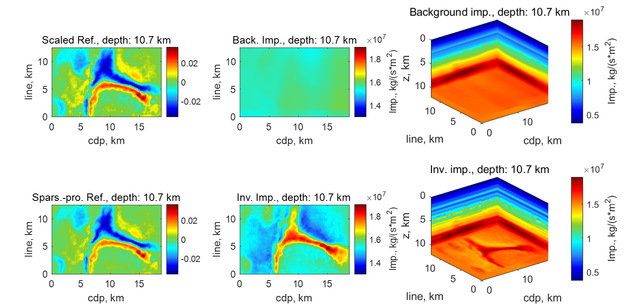Ting Leia, Huazhong Wanga, Bo Fenga
aSchool of Ocean and Earth Science, Tongji University, Shanghai 200092, China
Abstract:
Geophysical exploration is developing from qualitative seismic imaging to quantitative imaging, and broadband acoustic impedance is the core. Directly estimating broadband impedance using Full-Waveform Inversion is a strong nonlinear problem. It is difficult to obtain a reliable result in practice. We proposed an alternative way: Estimate background velocity, density and broadband reflectivity first, then fuse them to be the broadband impedance by information fusion. This paper studies the method of fusing bandlimited reflectivity and background impedance. Due to the observation with bandlimited seismic wavelet, only bandlimited reflectivity can be obtained even after a lot of processing. The bandlimited reflectivity can lead to oscillation error in impedance. Different from the conventional post-stack impedance inversion, this paper introduces an iterative process without the need of wavelet extraction. Start from the broadband reflectivity that has been subjected to fidelity imaging, least-squares migration and magnitude calibration. In order to reduce the oscillation error, reflectivity is sparsely promoted, such that the reflection coefficients from large to small are gradually fused with background impedance. Reflectivity and impedance are mutually constrained and iteratively updated, and lateral continuity is incorporated. Numerical experiment and three-dimensional field data application demonstrate the effectiveness of the method. Impedance shows higher interpretability than reflectivity.
Full article:https://doi.org/10.1109/TGRS.2023.3245083


